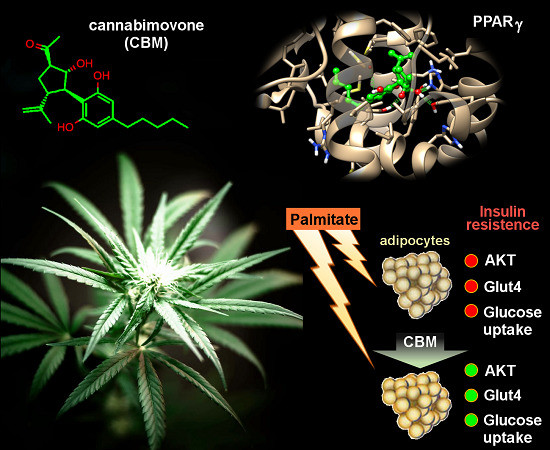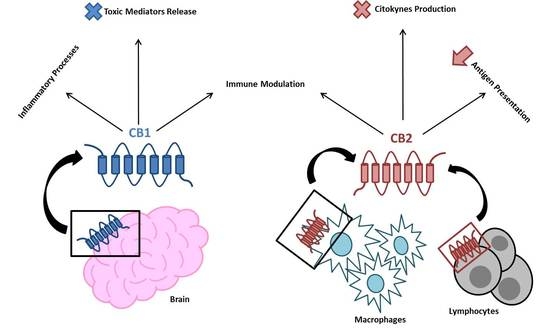 “The prevalence rates of depression and anxiety are at least two times higher in diabetic patients, increasing morbidity and mortality.
“The prevalence rates of depression and anxiety are at least two times higher in diabetic patients, increasing morbidity and mortality.
Cannabidiol (CBD) has been identified as a therapeutic agent viable to treat diverse psychiatric disorders. Thus, this study aimed to investigate the effect of CBD treatment (once a day for 14 days starting two weeks after diabetes induction; at doses of 0, 3, 10 or 30 mg/kg, i.p.) on depression- and anxiety-like behaviors associated with experimental diabetes induced by streptozotocin (60 mg/kg; i.p.) in rats.
Levels of plasma insulin, blood glucose, and weight gain were evaluated in all experimental groups, including a positive control group treated with imipramine. The rats were tested in the modified forced swimming test (mFST) and elevated plus maze (EPM) test. Besides, the levels of serotonin (5-HT), noradrenaline (NA) and dopamine (DA) in two emotion-related brain regions, the prefrontal cortex (PFC) and hippocampus (HIP) were evaluated using high-pressure liquid chromatography.
Our results showed that CBD treatment (only at the higher dose of 30 mg/kg) reduced the exaggerated depressive- and anxiogenic-like behaviors of diabetic (DBT) rats, which may be associated with altered 5-HT, NA and/or DA levels observed in the PFC and HIP. Treatment with CBD (higher dose) also induced a significant increase in weight gain and the insulin levels (and consequently reduced glycemia) in DBT rats. The long-term CBD effects gave rise to novel therapeutic strategies to limit the physiological and neurobehavioral deficits in DBT rats.
This approach provided evidence that CBD can be useful for treating psychiatry comorbidities in diabetic patients.”
https://www.ncbi.nlm.nih.gov/pubmed/32360935
“Treatment of diabetic rats with cannabidiol induced antidepressant- and anxiolytic-like behaviors.”
https://www.sciencedirect.com/science/article/abs/pii/S0304394020302901?via%3Dihub

 “The synthetic atypical cannabinoid Abn-CBD, a
“The synthetic atypical cannabinoid Abn-CBD, a  “Phytocannabinoids (pCBs) are a large family of meroterpenoids isolated from the plant Cannabis sativa. Δ9-Tetrahydrocannabinol (THC) and cannabidiol (CBD) are the best investigated phytocannabinoids due to their relative abundance and interesting bioactivity profiles. In addition to various targets, THC and CBD are also well-known agonists of peroxisome proliferator-activated receptor gamma (PPARγ), a nuclear receptor involved in energy homeostasis and lipid metabolism. In the search of new pCBs potentially acting as PPARγ agonists, we identified cannabimovone (CBM), a structurally unique abeo-menthane pCB, as a novel PPARγ modulator via a combined computational and experimental approach. The ability of CBM to act as dual PPARγ/α agonist was also evaluated. Computational studies suggested a different binding mode toward the two isoforms, with the compound able to recapitulate the pattern of H-bonds of a canonical agonist only in the case of PPARγ. Luciferase assays confirmed the computational results, showing a selective activation of PPARγ by CBM in the low micromolar range. CBM promoted the expression of PPARγ target genes regulating the adipocyte differentiation and prevented palmitate-induced insulin signaling impairment. Altogether, these results candidate CBM as a novel bioactive compound potentially useful for the treatment of insulin resistance-related disorders.”
“Phytocannabinoids (pCBs) are a large family of meroterpenoids isolated from the plant Cannabis sativa. Δ9-Tetrahydrocannabinol (THC) and cannabidiol (CBD) are the best investigated phytocannabinoids due to their relative abundance and interesting bioactivity profiles. In addition to various targets, THC and CBD are also well-known agonists of peroxisome proliferator-activated receptor gamma (PPARγ), a nuclear receptor involved in energy homeostasis and lipid metabolism. In the search of new pCBs potentially acting as PPARγ agonists, we identified cannabimovone (CBM), a structurally unique abeo-menthane pCB, as a novel PPARγ modulator via a combined computational and experimental approach. The ability of CBM to act as dual PPARγ/α agonist was also evaluated. Computational studies suggested a different binding mode toward the two isoforms, with the compound able to recapitulate the pattern of H-bonds of a canonical agonist only in the case of PPARγ. Luciferase assays confirmed the computational results, showing a selective activation of PPARγ by CBM in the low micromolar range. CBM promoted the expression of PPARγ target genes regulating the adipocyte differentiation and prevented palmitate-induced insulin signaling impairment. Altogether, these results candidate CBM as a novel bioactive compound potentially useful for the treatment of insulin resistance-related disorders.”
 “Cardiovascular complications are the major cause of mortality in diabetic patients. However, the molecular mechanisms underlying diabetes-associated arrhythmias are unclear.
“Cardiovascular complications are the major cause of mortality in diabetic patients. However, the molecular mechanisms underlying diabetes-associated arrhythmias are unclear. “The cellular microenvironment plays a critical role in the maintenance of bone marrow-derived mesenchymal stem cells (BM-MSCs) and their subsequent cell lineage differentiation. Recent studies suggested that individuals with adipocyte-related metabolic disorders have altered function and adipogenic potential of adipose stem cell subpopulations, primarily BM-MSCs, increasing the risk of heart attack, stroke or diabetes.
“The cellular microenvironment plays a critical role in the maintenance of bone marrow-derived mesenchymal stem cells (BM-MSCs) and their subsequent cell lineage differentiation. Recent studies suggested that individuals with adipocyte-related metabolic disorders have altered function and adipogenic potential of adipose stem cell subpopulations, primarily BM-MSCs, increasing the risk of heart attack, stroke or diabetes.
 “Beta-caryophyllene (BCP) is a flavoring agent, whereas l-arginine (LA) is used as a food supplement.
“Beta-caryophyllene (BCP) is a flavoring agent, whereas l-arginine (LA) is used as a food supplement. “Confident relationships between diabetes and liver damage have previously been established.
“Confident relationships between diabetes and liver damage have previously been established. “Endocannabinoid system consists of
“Endocannabinoid system consists of 
 “The endocannabinoid (eCB) system, i.e. the receptors that respond to the psychoactive component of
“The endocannabinoid (eCB) system, i.e. the receptors that respond to the psychoactive component of